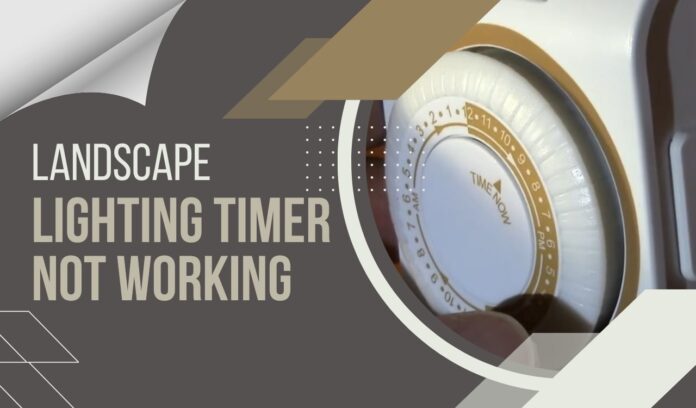Is your landscape lighting timer not working again, and you don’t know what exactly to do?
Most homeowners do not have the necessary skills to troubleshoot or determine why their landscape lighting is not working efficiently. Therefore, the experience is always annoying.
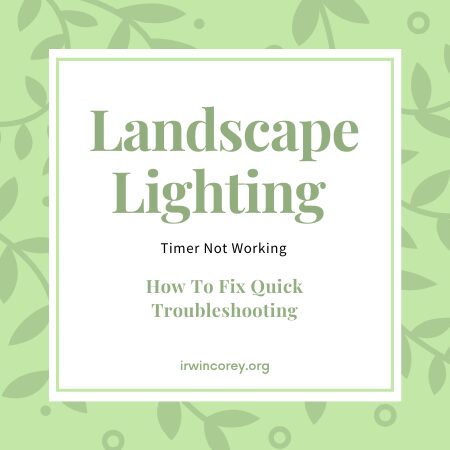
We understand how frustrating this experience may be, and that is why we have decided to discuss one of the most pertinent landscape lighting issues.
This article will discuss the actions and steps you need to take if your timer is not working efficiently.
We have noticed that timer-related issues are often easier to solve or fix than you can imagine.
What hinders people from troubleshooting or attempting to find out the possible issue is PANIC.
In the end, they pay an expert to fix an issue they could have done themselves, which sometimes costs a lot.
We believe this landscape lighting timer troubleshooting guide will give you the confidence you need to avoid hitting the panic button when next your landscape lights fail to come on at specified times.
In the end, you will learn about how best to solve this problem in no time, thereby bringing your landscape lights back to life without having to pay an expert.
What is a landscape lighting timer?

A landscape lighting timer is an electrical component or circuit design with a clock incorporated or fitted in it.
This circuit design interacts or communicates between the light and the power source. Its main function is to turn the light on/off automatically at specified times around your home.
One of the best ways to transform and give your home a new look is installing one of the best landscape lightings that you can find on the market.
Besides enhancing your property’s appearance by illuminating your pathways, walkway, garden, and other architectural features, landscape lighting also improves your home’s security level, thereby creating a safe environment for your household.
When you consider functionality and design, a timer controls when you desire to have the lights on around your home and when you want them to go off.
This way, you won’t have to switch your landscape lights on/off yourself, thereby saving you the stress. Also, a landscape lighting timer saves energy and money.
Landscape lighting timers are available in various designs, sizes, and operations. Most timer models on the market today are digital.
The digital timers usually come with a battery and automatically adjust themselves according to the settings.
Although all timers perform the same primary function, the features may differ from one design to another.
Which of the landscape lighting designs has a timer?
A few landscape lighting designs or brands come with a timer. Some of the brands that come with a built-in timer are ZUCKEO and SUNVIE.
Purchasing a landscape lighting model that comes with a timer is subjective. After considering your needs and preference, you may decide to go for a design that doesn’t have a timer.
In case there is a preference change later in the future, you can get a top-quality timer design separately and connect it with your lighting system.
A digital timer is pocket-friendly, so you won’t have to spend excessively or recklessly on this accessory.
Some of the top landscape lighting timers available in the market include LIGHTKIWI, INTERMATIC, TEKLECTRIC, FOSMON, BN-LINK, and FOSMON.
These designs are easy to install, easy to program, pocket-friendly, and not difficult to operate.
Where is the timer placed on landscape lighting?
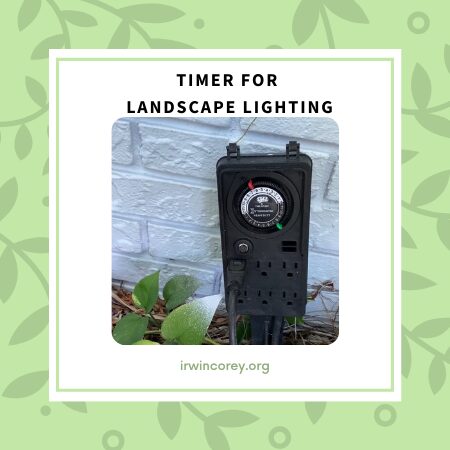
Most landscape lighting systems come with transformers. These transformers may come with a built-in timer that is active all through the day.
In case your preferred choice of landscape lighting model doesn’t come with a transformer and a timer, you may have to buy these components separately.
In case your landscape lighting comes with a built-in timer and you want to adjust or reset the setting, all you need to do is open up the transformer.
You will see the timer plugged in somewhere inside there.
The location of the timer in the transformer may differ from one design to another.
So in some cases, you may need to have the timer unplugged from the transformer before you can easily make relevant adjustments or settings.
How do I know that my landscape lighting timer is not working: Symptoms?
- The light won’t come on automatically at night at the specified time
- The light won’t turn off automatically at dawn at the scheduled time
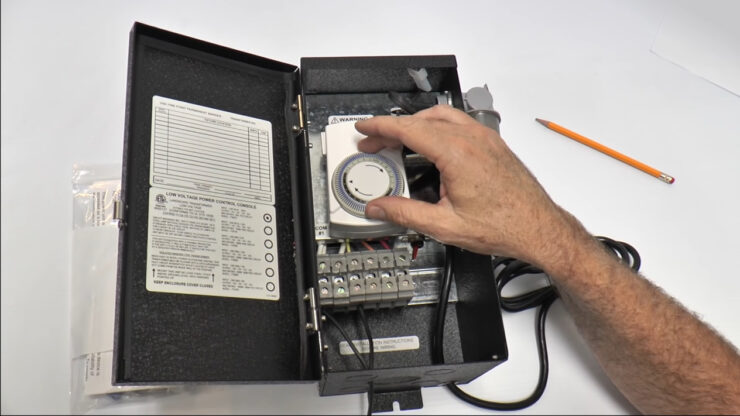
Troubleshooting of landscape lighting transformer timer: Outdoor light timer not working
Landscape lighting timer not working? Before you can fix a faulty timer, you need to find out what the problem is. Hence, you need to have an understanding of why a timer issue may occur.
So, before you decide to invite an expert into your home to fix the timer on your landscape lighting, we will highlight some of the troubleshooting steps or tips that you can try out.
The following are some of the things you need to consider to know what needs to be done.
- The first thing you need to do is to check for power loss and other associated issues. Find out if the transformer is powered. In a situation where there is a power loss, a landscape timer may not turn on/off the lights at scheduled times.
- Check the battery. If your timer has a battery backup, you may want to find out about the battery’s condition. If the battery is fully drained, the settings may be compromised once the transformer goes off in a situation where there is a power outage since there is no backup to keep the timer running.
- Suppose your landscape lighting system uses the outdated or traditional photocell-controlled transformer. In that case, whenever there is a short in the wiring, it may become difficult for the transformer to detect the exact time of the day.
- In case of a power outage, the Bluetooth transformer’s timer will lose track of the day’s exact time. When this happens, your landscape lighting will fail to come on or go off at the specified times.
How to fix a faulty landscape lighting timer
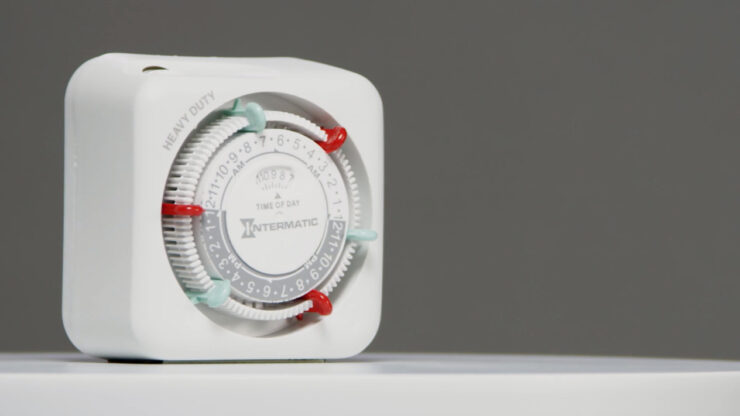
Once you have identified the problem, the next thing you need to do is find a way to fix or correct the issue. It takes a few minutes to complete the steps involved.
Full-drained backup battery
- Open the transformer door
- Locate where the timer is positioned
- Once you find the timer, pull it out to create more space for a comprehensive check
- Get a new backup battery, and replace the old or bad one with it. In case you can’t carry out the replacement yourself, you may talk to an expert
Photocell transformer
- You can also check for interference. Find out if plants haven’t outgrown the photocells. In case there is any interference or blockage, take it away
- Check if the photocell is still working by covering it with electrical tape. Make sure you use black tape if you are conducting this exercise during the day. Using black tape gives the photocell an impression that it’s night already
- If the lights fail to come on, you may need to replace the photocell
- For accuracy at all times, you may decide to install an astronomical timer (a location-dependent timer that adjusts to changing nighttime hours) instead of depending solely on the photocell.
Bluetooth transformer
- Ensure power is restored to the landscape lighting transformer
- Adjust the settings by reprogramming the timer using the appropriate app on your mobile device until it starts working normally.
FAQs
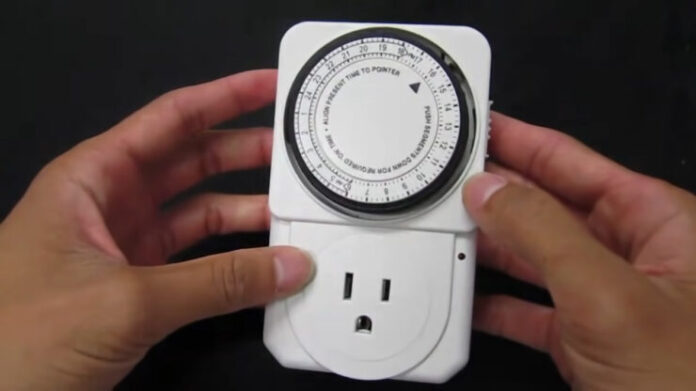
How can I reset an outdoor lighting timer?
Open the transformer, and search for where the R button is located on your timer. “R” stands for RESET or RESTART. Press the R button and release your finger accordingly.
This command clears the programming and returns the timer back to factory settings. The next thing to do is to adjust or set the time as preferred.
What is low voltage landscape lighting?
Landscape lighting designs grouped under this category are known to use twelve or fourteen volts.
Also, low voltage landscape lighting makes use of a transformer. The main function of the transformer is to reduce or regulate the voltage from 120volts to 12volts.
Although low-voltage landscape lights are a bit costly, they are easy and less expensive to operate and maintain.
One of the top low voltage landscape lighting designs in the market is ZUCKEO 5W LED.
What are the best landscape lighting designs or models in the market?
There are several top landscape lighting systems or designs in the market. These models are built to meet homeowners’ lighting requirements.
Some of the brands you can go for include ZUCKEO, SUNRIVER, GREENCLICK, COVOART, and SUNVIE.
These landscape lighting systems are suitable for both security and lighting purposes.
How do I choose the perfect lighting for my home?
Asides from price, design, durability, functionality, and performance, it is also important you consider the lighting location before you make a final purchase decision.
The lighting location allows you to understand the exact area of your home that you want to illuminate.
When you look at the various landscape light designs on the market, each model is built for different spaces.
With a clear understanding of your space, you will pick the appropriate lighting for your home.
How can I differentiate between the various landscape lighting needs?
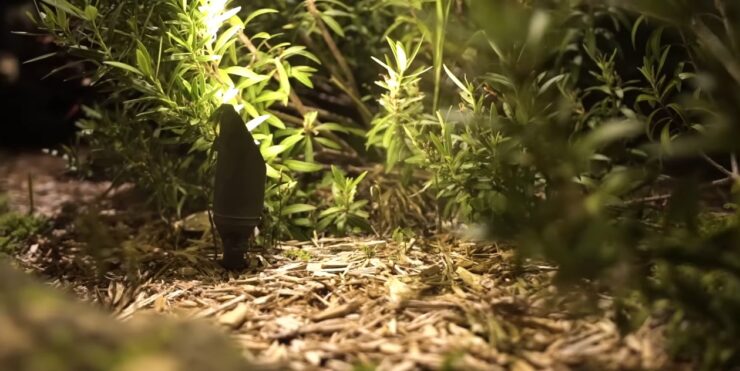
The lighting system needed for navigational purposes is different from what is needed for decorative purposes.
Suppose you are focused on lighting some important parts of your house, such as your pathways and walkways.
In that case, an effective way to achieve the best result is through ground lighting.
To showcase the various architectural designs around your home, you may consider a combination of high lights and low lights.
What are the factors to consider before the installation of landscape lighting?
Before you consider buying or installing a landscape lighting system in your home, there are some necessary factors you need to consider.
These factors are the style of your property or home, power source, presence of objects, durability, light distribution, and the position where the light will be installed.
To avoid light wastage, make sure you do not install the light very close to the ground, wall, or architectural elements.
What are the various landscape lighting power sources?
The most common types of power sources available for landscape lighting include electrical, solar, and battery.
Landscape lighting that uses an electrical source will need wiring, and it is also considered a permanent fixture.
Compared to the other two light sources mentioned above, the electrical lighting source offers more constant and reliable lighting. Also, the level of brightness is superior.
Landscape lighting designs or models powered by solar are considered energy-efficient, thereby cutting down energy costs.
The lighting system stores energy when the sun shines during the day and uses the stored energy to illuminate your home when the sunsets.
Which of the power source should I consider in terms of longevity?
When it comes to longevity, landscape lighting models powered by solar are better, thanks to the top-end technology that is being put into use.
In case your solar-powered landscape lighting stops working, you may only need to consider a battery replacement.
Can insects or animals damage a landscape lighting timer?
Yes, insects or animals can potentially damage a landscape lighting timer by chewing on wires or nesting inside the timer box. Consider placing a screen or cover over the timer to prevent access by pests.
How can I tell if my landscape lighting timer is compatible with my lighting system?
Consult the user manual for your lighting system and the specifications for your timer to determine if they are compatible. If you are unsure, consider consulting a professional electrician.
What if my landscape lighting timer is not keeping accurate time?
Check the battery or power source for the timer, as well as the timer settings. If the issue persists, consider replacing the timer mechanism.
Can power surges or outages damage a landscape lighting timer?
Yes, power surges or outages can potentially damage a landscape lighting timer. Consider using a surge protector or backup power source to protect your timer from these events.
What if my landscape lighting timer is not turning on all of the lights?
Check the wiring connections between the timer and the lighting fixtures, as well as the settings for the timer. If the issue persists, consider replacing any faulty components.
How often should I perform maintenance on my landscape lighting timer?
Perform routine maintenance on your landscape lighting timer at least once a year, including cleaning the timer box, inspecting the wiring, and testing the timer’s operation.
Verdict
We have highlighted various ways to identify and troubleshoot for any timer-related issues with your landscape lighting.
We hope the information we have provided will assist you in taking the necessary actions going forward.
Next time you are faced or confronted with any issue or difficulty regarding your landscape lights- issues related to turning the lights on/off or keeping them on, make sure you take time to check for possible damages or issues.
While checking for related issues, make sure you are honest and sincere with yourself. This is the only time you can know the actual problem and the possible steps to take.
In case you continue to experience the same issue(s) with your lighting system, you may want to invite an expert over to evaluate or find out the exact issues.
Suppose a lighting problem is considered to be beyond repair, in most cases, due to wear and tear. In that case, it may be the best time to consider a replacement.
Go for a new lighting system that offers improved performance, functionality, and effect that you have always wanted.

